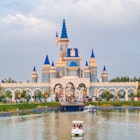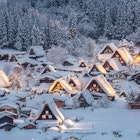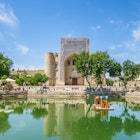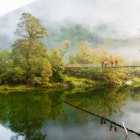
Nov 23, 2025 • 7 min read
Once December rolls around, New York City is a magical place to spend a winter weekend. Here are some tips.

Nov 23, 2025 • 7 min read
Once December rolls around, New York City is a magical place to spend a winter weekend. Here are some tips.

Nov 23, 2025 • 6 min read
From charming towns to staggeringly beautiful parks, these six day trips from Washington, DC, are incredible options to explore outside the city.

Nov 22, 2025 • 7 min read
Learn about Denmark's history of kings and Vikings, explore its lovely landscapes and discover a world apart from its cosmopolitan capital.

Nov 21, 2025 • 2 min read
While modern Cartagena stretches along the coast and inland, the city's Old Town fiercely preserves its antique essence.

Nov 21, 2025 • 6 min read
Make the most of the Okanagan Valley's varied landscapes and leisurely winery hopping.

Nov 21, 2025 • 7 min read
Here’s everything you should know before using the Eurotunnel, from terminals and tickets to border crossings and queues.

Nov 21, 2025 • 5 min read
Planning a vacation with the little ones? Here are some of the best things to do in Belize with kids of all ages.

Nov 21, 2025 • 6 min read
Uzbekistan has an exciting, eclectic combination of things for you and your kids to see and do.

Nov 21, 2025 • 5 min read
Japanese-style listening bars have taken the world by storm, but nothing beats the buzz of visiting them in the place where it all began.

Nov 20, 2025 • 8 min read
Follow this week-long itinerary in Ireland, with nights in luxury hotels in Dublin, Adare and Killarney.

Nov 20, 2025 • 8 min read
Germany’s maritime north keeps a quiet radiance under the radar, but surprises away as you explore.

Nov 20, 2025 • 7 min read
Start 2026 with epic adventures, cultural experiences, foodie forays and wildlife encounters. Here are the best places to visit in January.

Nov 20, 2025 • 7 min read
Uzbekistan is one of Asia’s most affordable destinations: Traveling the Silk Road promises nature, culture, food, winter sports and architecture on a budget.

Nov 20, 2025 • 9 min read
Travelers to Oman will appreciate this for practical advice on social etiquette, safety, weather, cultural practices and more.

Nov 20, 2025 • 8 min read
Go beyond the Rock of Gibraltar and take in big doses of history, scenery and character in this compact British Overseas Territory at Spain's southern tip.

Nov 20, 2025 • 7 min read
Montenegro and Albania both offer Adriatic coastlines meeting lively small towns. We help you choose which one to visit.

Nov 20, 2025 • 10 min read
There are few New Zealand adventures more iconic than the 53.5km Milford Track through Fiordland National Park. Plan your hike with this guide.

Nov 20, 2025 • 7 min read
Family travelers can expect to feel very welcome in Morocco. Here are the best things to do there with kids.

Nov 19, 2025 • 4 min read
You have many options for bouncing around this city, from bikes to buses to taxis and more. Here's what you need to know.

Nov 19, 2025 • 8 min read
The Fergana Valley is the beating heart of Uzbek culture. Capture the country's soul in this charming region with our guide to what to see and typical costs.

Nov 19, 2025 • 8 min read
From famous food trucks to Michelin-recognized meals, here's where to try the best flavors of Vancouver.

Nov 19, 2025 • 9 min read
All aboard the budget-friendly express train to Chattanooga! Enjoy a cut-price vacation with our insider tips on the best free things to do in Scenic City.